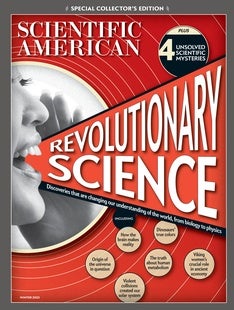 |
| May 04, 2023 |
This week, we’re caught up in the fallout from reaching for the stars. Well, not “the stars,” exactly, but rather reaching for a faster, better, cheaper way of accessing space. SpaceX’s recent test flight of its gigantic Starship rocket—the largest ever built—is the latest and greatest development in the generations-spanning effort to make spaceflight much less expensive and far more routine. But as our lead story shows, SpaceX must overcome many obstacles to succeed—chief among them the literal and figurative “fallout” from Starship’s unexpected destruction of its launchpad. Elsewhere this week, we have stories on planet-swallowing stars, needed improvements to NASA’s safety culture, mathematicians beguiled by the “Sleeping Beauty Problem,” the murky origins of Mars’s moons, and much more. Enjoy! |
| | Lee Billings, Senior Editor, Space & Physics | |
 |
| |
| |
| Planetary Science Where Did Mars's Moons Come From? New results from a U.A.E. orbiter suggest Mars’s moons may be pieces of the planet. A Japanese mission will tell us for sure | | | | |
| |
| |
| |
| |
| |
| |
| |
| |
| |
| |
FROM THE STORE
 | | | |
| |
FROM THE ARCHIVE
 | | | |
LATEST ISSUES
 |
| |
| Questions? Comments?  | |
| Download the Scientific American App |
| |
| |

























